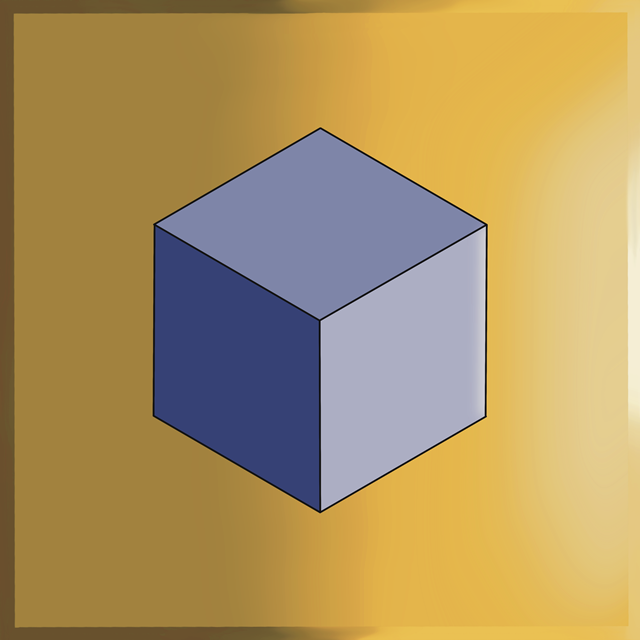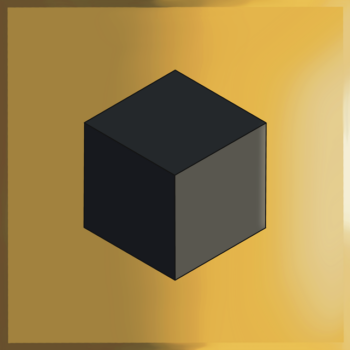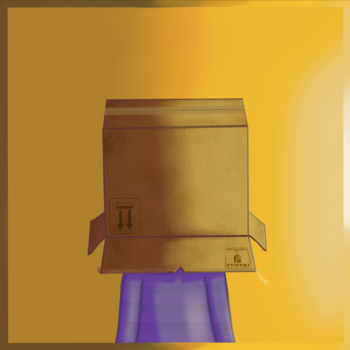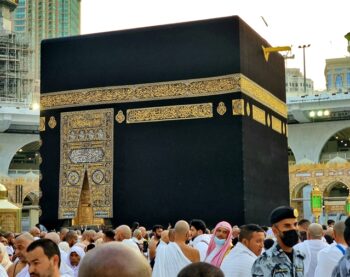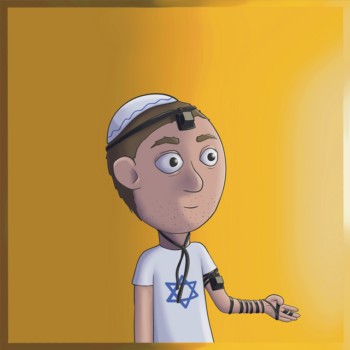Definition:
A “cube” is a three-dimensional geometric figure with six equal square faces, twelve edges, and eight vertices. In mathematics, it is a special type of rectangular prism where all sides are of equal length.
Etymology:
The word “cube” comes from the Latin “cubus,” which was borrowed from the Ancient Greek “κύβος” (kybos), meaning “a die” or “a cubic object.” The Greek term itself may have originated from a Semitic root, as similar words appear in Hebrew and Arabic. Over time, the term evolved to refer to both the mathematical concept and cube-shaped physical objects.
Description:
A cube is one of the simplest and most recognizable three-dimensional shapes. Each of its six faces is a square of the same size, meeting at right angles. Cubes are frequently seen in architecture, gaming (such as dice), and packaging.
In physics, cubes appear in crystallography and structural designs due to their stability.
The concept of “cubing” a number in mathematics extends to higher dimensions, such as a tesseract (a four-dimensional cube).
Symbolism:
Cube most often symbolizes structure. As 100% perfect structure is impossible to achieve, it remains a fictional concept, and the fictional aspect of it becomes its primary symbolic meaning. A cube symbolizes a structure of fantasy.
A cube, as an enclosed container, carries the symbolism of imprisonment. Whatever is inside a cube is concealed from the outside. The full picture will always be outside the cube, and whatever is inside the cube is a closed system that cannot access the outside.
The phrase “thinking outside the box” suggests that the thinking box itself represents a constraint—an enclosure that limits thought within a predefined structure. If a cube symbolizes structure and structure is inherently an unattainable ideal, then the thinking box becomes a prison of fantasy: an artificial boundary imposed on thought, confining it within an illusion of completeness. Actual understanding lies beyond the box, outside the closed system where unrestricted thought can access the full picture. To think outside the box is to escape the prison of fantasy, acknowledging that the structured ideas within the box are not absolute but confined by their own fiction.
In the symbolic animated short film “In-Shadow: A Modern Odyssey” (2017), the cube is used as a recurring motif to represent the prison of fantasy, trapping individuals within a manufactured illusion. The film portrays young students as children being brainwashed in the classroom, each with their heads locked inside identical red cubes. This symbolizes how the rigid structure of the school system suppresses independent thought, molding students into obedient, uniform minds incapable of creativity. The education system is merely one cog in the larger global machine, which operates as a vast prison of imagination, ensuring the system sustains itself.
Beyond the classroom, the cube continues to manifest in different aspects of society. Those who seek psychiatric help are shown with their heads confined within cubes, begging a greedy psychiatrist for relief. Instead of freeing them, he thrives on their suffering, rubbing his hands together as his diplomas float in the air—credentials granted by the very system that enables this entrapment. The implication is clear: institutions meant to provide mental clarity and healing instead reinforce the same psychological prison.
In the media, reporters are seen silencing the masses while holding microphones adorned with red cubes, with their own pants pulled down—a visual metaphor for deception and humiliation. The message is that mainstream media does not inform or liberate, but rather dictates a controlled narrative, keeping people in a passive, unquestioning state.
Even those who believe they are free are merely prisoners of their own illusions. Individuals are depicted curled up inside transparent cubes, staring at their smartphones with forced, fearful grins, detached from the world around them. Their only connection to reality is what their screens allow them to see, further emphasizing that the cube is not just a physical or societal prison but also a mental one.
The oppressive force of this system is most evident in the scenes of enforcement. A heavily armored officer, his helmet marked with a cube emblem, stands with his eyes closed, symbolizing obedience to authority. Meanwhile, a bald man in white, trapped inside a glowing red cube, raises his arms in distress as a chaotic red digital framework surrounds him—his prison fully realized.
A sinister psychiatrist stands with cubes and squares floating around his head as he strikes the Egyptian pose. Under his lowered arm, people are crushed inside a cube, while above his raised hand, ominous symbols of destruction—missiles, poison, and skulls—loom. Behind him, two identical men in black suits hold the rewards of submission: a gold medal necklace and four gold coins, representing how the system dangles material success to keep its prisoners compliant.
The final image of a smug businessman in a pinstripe suit, standing confidently with his hands in his pockets, contrasts sharply with the hunched figures around him, their heads encased in red cubes. He smiles, free of the cage that traps the others—not because he has escaped, but because he is the one who benefits from the system that keeps them imprisoned.
Throughout the film, the cube is not just a physical boundary, but a symbol of mental confinement. It represents the illusion of freedom, the suppression of creativity, and the structures that ensure people remain locked in a fantasy designed to sustain the system itself.
Click to watch the video clips.
At the 2011 MTV Video Music Awards, propaganda artist Katy Perry appeared wearing a yellow cube on top of her head, resembling the plumbob from “The Sims” video game series. By doing so, she openly symbolized how she is a controlled puppet, much like a character in the game. The cube, often associated with confinement and restriction, further reinforced the message of her imprisonment within the industry.
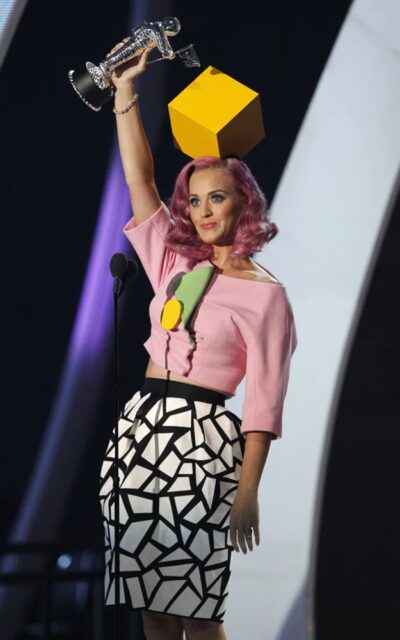
The cube symbolizes a prison of fantasy, which is a perfect metaphor for how religions trap people within rigid belief systems. The cube is a closed structure—solid, inescapable, and confining. Once inside, there’s no way out unless one deliberately breaks through the walls. Religions, like a cube, create an enclosed space where people are kept inside by doctrines, traditions, and fear of what lies beyond.
Islam, Christianity and Judaism, all rely on this same fundamental structure: a closed, artificial world that defines what is “true” and discourages looking beyond its walls. The cube, then, is the perfect representation of this prison—strong, unyielding, and designed to keep people trapped inside a fantasy built by others.
The holiest site in Islam is Mecca, home to the Kaaba—a large, black cube that serves as a central symbol in the religion. Muslims recognize the Kaaba as the “House of Allah” and the focal point of their prayers. From a symbolic perspective, the Kaaba represents a “prison of fantasy,” embodying an idealized construct that confines believers within a particular framework of thought.
During the Hajj pilgrimage, Muslims perform a ritual known as Tawaf, which involves circling the Kaaba seven times in a counterclockwise direction. This act is considered an obligatory rite for the completion of the Hajj and is deeply rooted in Islamic tradition. The number seven holds special significance in Arabic culture, claimed to symbolize completeness or perfection. The ritual is a demonstration of devotion and submission to Allah’s will.
Circling around an object symbolizes worship of the object and what it represents. The same way Christians circle around the Christmas tree, which is a cone or triangle, Muslims circle around the cube. The same symbolism is there. They are both worshipping the system of their imprisonment.
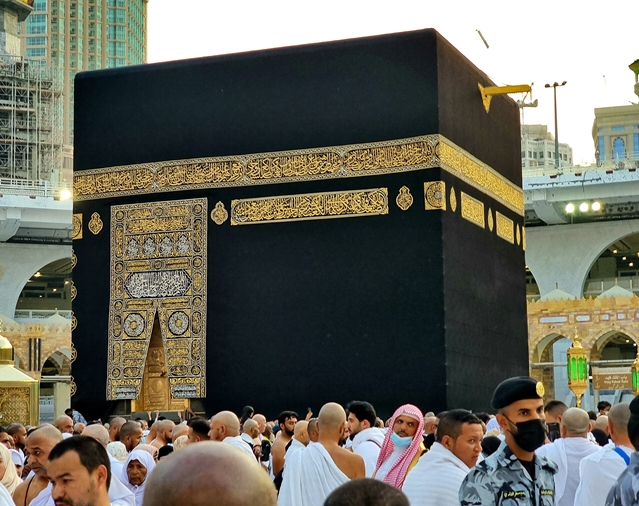
A hexagon and a cube are the same symbol because a cube, when viewed from a certain angle, looks like a hexagon. This is how isometric drawings work—they show a 3D object in a way that makes its edges form a six-sided shape. So, a hexagon can be seen as a flat representation of a cube, just from a different perspective. The connection between a hexagon and a cube is common in symbology.
In Judaism, the Star of David contains a hidden hexagon—the two-dimensional shadow of a cube. This symbolizes how religious systems disguise their true nature. On the surface, the Star of David might seem like a symbol of unity, but underneath, the cube is still there, showing that the same restrictive structure is there, just hidden within layers of tradition and symbolism.
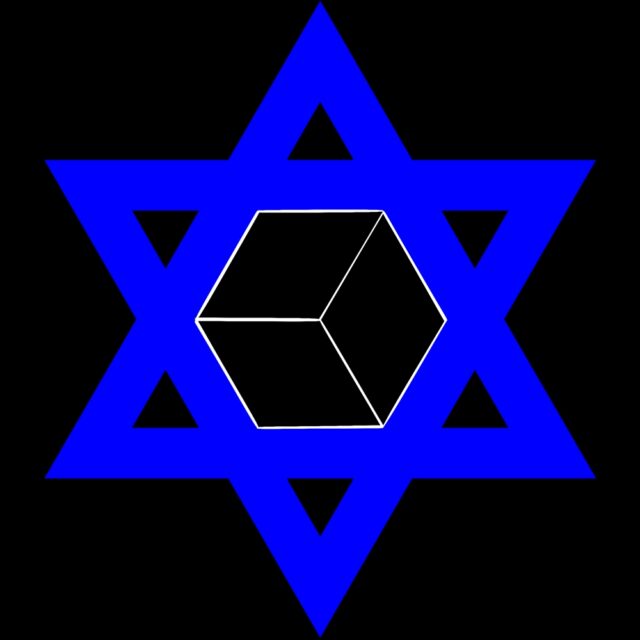
Tefillin are small black leather boxes containing Hebrew scriptures, worn by observant Jewish men during weekday morning prayers. One box is bound to the forehead, and the other to the arm, with leather straps wrapping around the arm and hand.
Tefillin physically bind the wearer, representing mental and physical submission to religious doctrine. The head tefillin sits over the third eye, symbolizing control over thought, while the arm tefillin, wrapped tightly, signifies control over action. This could be seen as a metaphor for being confined within a belief system that shapes one‘s perception of what exists, restricting alternative ways of thinking.
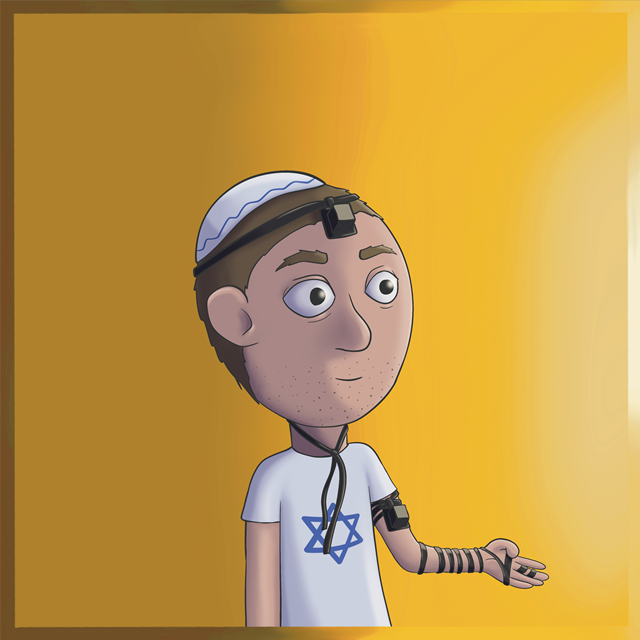
The Christian Cross, which is the most common symbol of Christianity, is actually an unfolded cube. This means that at its core, Christianity carries the same rigid structure as a closed box—it just presents itself differently. The cross, often associated with suffering and sacrifice, reinforces the idea that believers must accept hardship rather than seek escape. When the cube is unfolded, it does not disappear; it simply changes form, meaning the system of control remains intact. Instead of being visibly confined within walls, followers are bound by an ideology that keeps them within the same structured framework, just in a more deceptive and expanded way.

An ice cube can symbolize a prison of fantasy through its key characteristics. Its frozen state represents stagnation, trapping everything within and preventing change or progress. The transparency of ice reflects the invisibility of fantasy—something that appears real but remains intangible, an illusion that holds no substance. This creates a paradox: though one can see through it, they remain confined within its boundaries. The ice cube, then, becomes a metaphor for being trapped in an illusion, where the mind is immobilized by fantasy, unable to break free into the fluidity of what exists.
This symbolism is reinforced by the fact that ice and frozenness are often used as symbols of Islam. Islam, like ice, is rigid and designed to preserve a specific state, preventing transformation or deviation. Just as ice halts movement and locks everything inside, Islam enforces a fixed ideological structure, discouraging questioning or change. The frozen nature of ice mirrors how Islam seeks to maintain an unchanging framework of belief, trapping individuals within its rigid system much like how an ice cube suspends everything within it, restricting flow and progress.
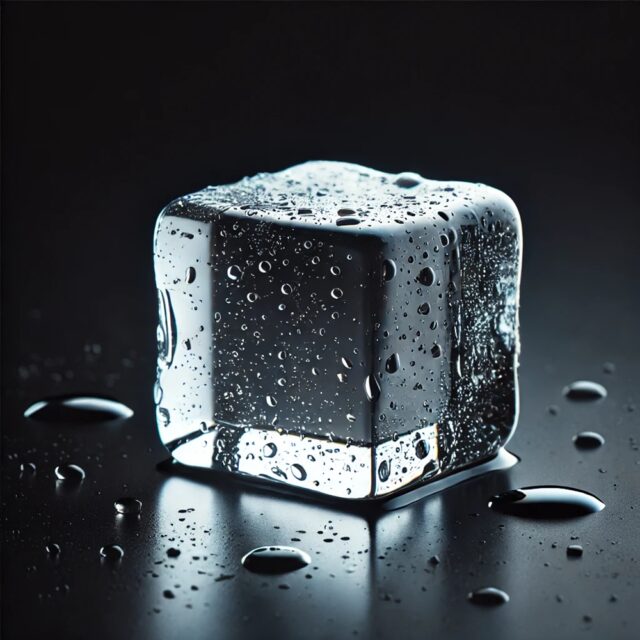
In the science fiction franchise “Star Trek,” Borg Cubes are cube-shaped starships that symbolize totalitarianism and the loss of individuality through their rigid, geometric design and the Borg Collective’s oppressive ideology. Their shape—a perfect cube—reflects absolute uniformity, efficiency, and a lack of personal expression, much like an authoritarian regime that values strict order over freedom. Unlike the Federation, which thrives on diversity and personal choice, the Borg enforce a singular will where all members are stripped of identity and absorbed into the herd mentality of the hive.
Assimilation is the Borg’s method of expansion, forcibly converting individuals into drones who serve the Collective without emotion or autonomy. This mirrors totalitarian states that enforce ideological conformity, where dissent is impossible, and resistance is futile.
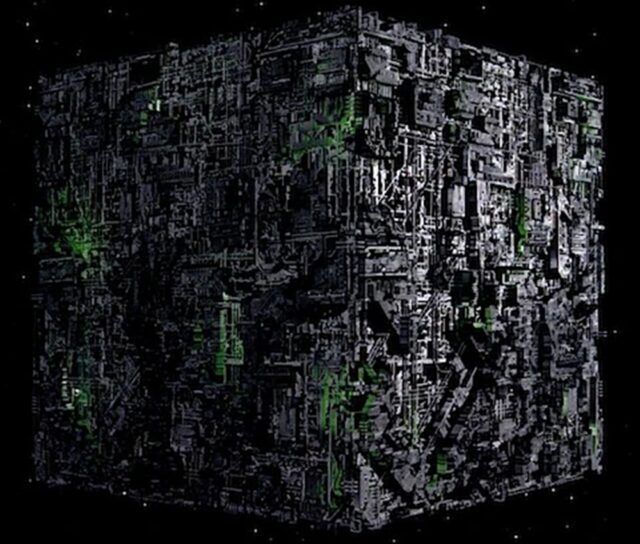
In the movie “Cube” (1997), a group of strangers find themselves trapped in a massive cube, an endless labyrinth of identical rooms, some of which are rigged with deadly traps. As they desperately search for an escape, they begin to realize that the cube is not just a physical prison but a symbol of confinement itself—a structure designed to control, dehumanize, and ultimately break its captives.
The cube represents a prison of fantasy, an illusion that logic, patterns, or obedience might lead to freedom. Each character clings to a different belief about the cube’s purpose—whether it’s a government experiment, an elaborate puzzle, or an escape room with a solution. But in the end, they come to a bleak realization: the system has no guiding intelligence, no purpose beyond sustaining itself. The more they attempt to “solve” the cube, the deeper they sink into its trap, mistaking the pursuit of meaning for actual progress.
This endless cycle mirrors the illusions of control and purpose in modern society, where people are conditioned to believe that if they just follow the right rules, and work hard enough, they will eventually break free. Yet, like the cube, the system is built to contain rather than liberate. Even when an escape seems possible, it remains uncertain whether the world beyond is actually free—or simply another layer of the same prison.
The movie “Cube” is a chilling exploration of the futility of seeking meaning in an indifferent system, asking whether we are ever actually free or just endlessly moving between rooms, believing in an escape that may as well be impossible.
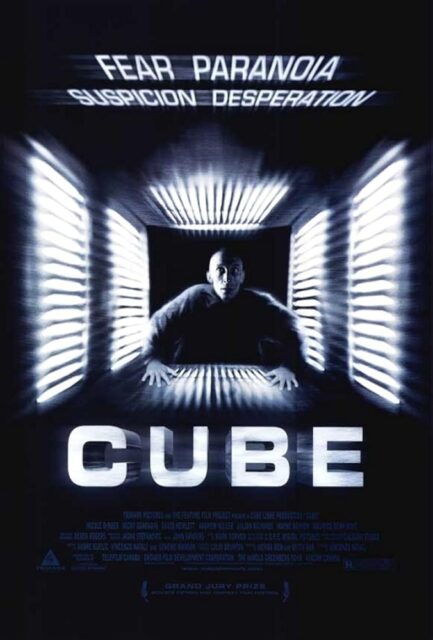
In the science fiction franchise “Transformers,” the AllSpark is a cube-shaped artifact that serves as the source of life for the Transformers. While primarily depicted as a creator, it also carries themes of imprisonment and containment. The AllSpark itself is often hidden or locked away to prevent its misuse, suggesting that absolute power must be confined to avoid destruction. This is evident in Transformers (2007), where the U.S. government imprisons both Megatron and the AllSpark within the Hoover Dam, fearing their combined potential for chaos.
Beyond its own confinement, the AllSpark can also be seen as a prison for those it creates. The mindless machines it brings to life act without direction, suggesting that they are not born free but enslaved to their own existence, lacking autonomy or purpose. Similarly, the Autobots and Decepticons are trapped in an endless war over the AllSpark, making them prisoners of their own conflict. Even after its destruction, its influence lingers, binding them to a cycle of war and survival.
Ultimately, the AllSpark represents both life and captivity—a force capable of creation but also responsible for trapping those it touches in a fate they cannot escape. Whether through physical containment or existential bondage, the cube serves as a reminder that great power often comes with its own form of imprisonment.
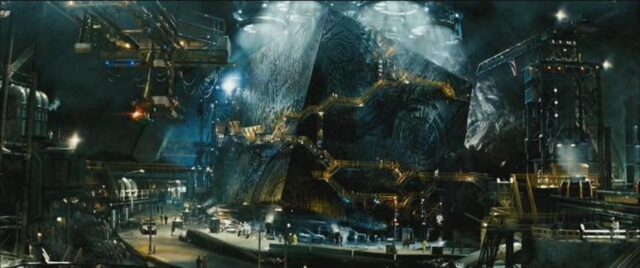
The GameCube is a video game console released by Nintendo in 2001, known for its compact, cube-shaped design. The GameCube’s cube shape symbolizes containment and structure, reinforcing the idea of a “prison of fantasy.” Since the console holds and runs video games, it effectively acts as a box that traps players within fictional worlds—temporary escapes from reality. The player enters these artificial worlds through the console, but they remain enclosed within the digital boundaries of the games.
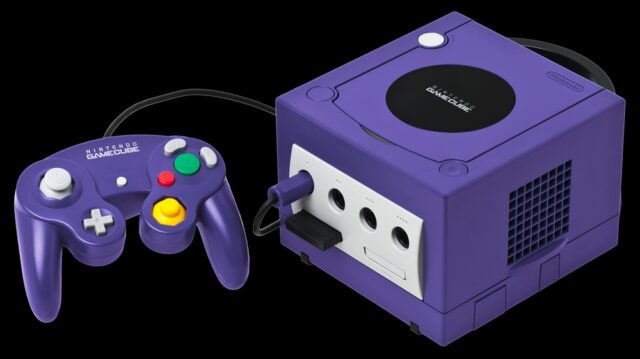
The GameCube logo features a cube within a cube, symbolizing the console’s name and its immersive, contained gaming worlds. The outer cube forms a stylized letter “G”, which stands for GameCube, but the letter G is often associated with “God” in symbolic traditions, such as Freemasonry and various philosophical interpretations.
Additionally, the letter G resembles the circular motion found in refresh or reload icons, which typically symbolize cycles, continuity, and repetition, and is an imprisonment symbol. This could reflect the looping nature of games, the replayability of experiences, and the cycle of immersion within virtual worlds.
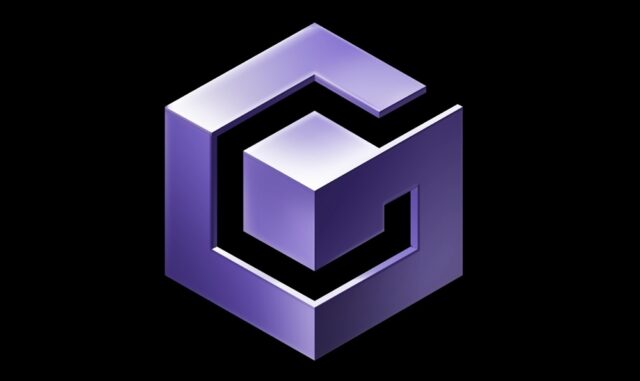
A “gelatinous cube dice jail” is a novelty tabletop gaming accessory, often used in games like Dungeons & Dragons (D&D), designed to resemble a gelatinous cube, a classic D&D monster that engulfs and dissolves anything in its path. This small container, typically made of translucent resin or plastic, serves as a “prison” for dice that keep rolling poorly, humorously punishing them for bad luck.
What makes this design particularly fitting is that it reinforces the symbolic connection between cubes and imprisonment. The die, trapped inside the gelatinous cube, visually mirrors the way adventurers are engulfed by the creature in-game, unable to escape their fate. This further highlights how the rigid, enclosed shape of a cube naturally represents confinement and entrapment, making the gelatinous cube dice jail a perfect blend of function, humor, and symbolism.
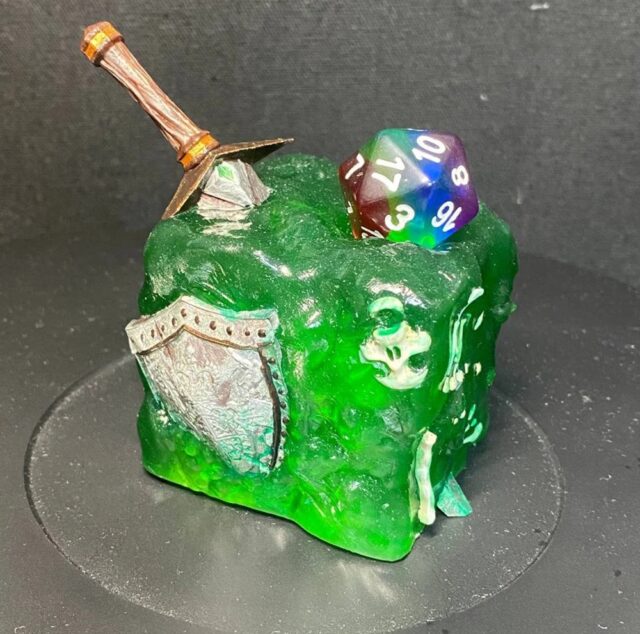
“Jujutsu Kaisen” is a Japanese manga and anime series that follows sorcerers battling curses and supernatural entities formed from human negativity. One of its most feared artifacts is the Prison Realm, a sentient, cube-shaped Cursed Object that can seal anyone inside with no escape.
The Prison Realm being a cube reinforces the symbolic connection between cubes and imprisonment. The eyes covering the cube add another layer of symbolism, as having less or more than two eyes usually symbolizes fantasy. This makes the Prison Realm more than just a physical prison—it becomes a prison of fantasy, where the one trapped is cut off from what exists, locked inside an all-seeing, inescapable construct.
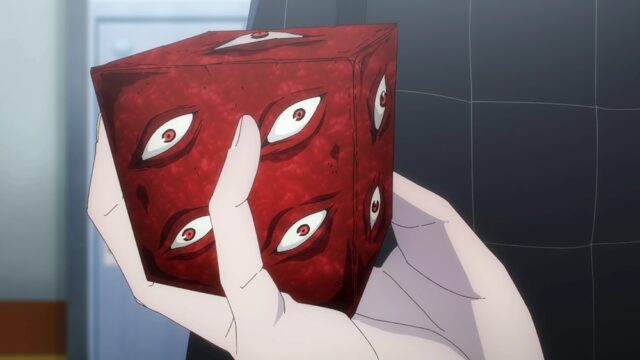
The “Key of Aaravos” is a mysterious and powerful artifact in “The Dragon Prince,” an animated fantasy series. It is a cube-shaped object with glowing runes representing the six primal sources of magic: the Sun, Moon, Stars, Earth, Ocean, and Sky. The cube is linked to Aaravos, a powerful and enigmatic Startouch Elf who manipulates events from behind the scenes.
The Key of Aaravos being a cube reinforces its connection to imprisonment, as cubes are commonly associated with restriction and containment. This is fitting because Aaravos himself is imprisoned in a magical prison, and the cube may serve as a key to either unlock or reinforce that confinement.
The glowing runes on the cube enhance its symbolic meaning, as writing, especially glowing inscriptions, is often tied to fantasy. Just as the Prison Realm in Jujutsu Kaisen uses eyes to reinforce fantasy symbolism, the Key of Aaravos uses glowing runes to connect it to the prison of fantasy, a concept where magical knowledge and power can both enlighten and trap those who seek it. This makes the cube not just a physical object but a representation of hidden knowledge, control, and the thin boundary between freedom and confinement.
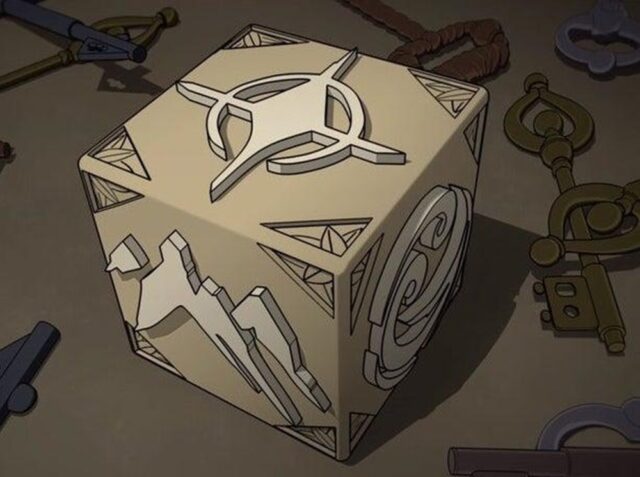
The “Tesseract,” also known as the Cube, is a crystalline containment vessel for the Space Stone in “Marvel’s Cinematic Universe” (MCU). As a cube, it naturally reinforces the symbolic connection between cubes and imprisonment, as it quite literally traps the immense power of the Space Stone within its rigid structure. While the stone itself grants freedom of movement through space, its containment within the Tesseract paradoxically restricts and controls that power, echoing the way cubes have historically represented confinement.
Beyond its physical imprisonment symbolism, the Tesseract also aligns with the prison of fantasy concept. As an object of nearly limitless power, it fuels myths, wars, and obsessions throughout history. Countless factions—HYDRA, S.H.I.E.L.D., the Kree, and Thanos—seek to possess it, believing it to be the key to ultimate control. However, their pursuit of its power only leads them deeper into illusion and destruction, much like how fantasy can entrap individuals in an unreachable ideal. The Tesseract thus becomes more than just a prison for the Space Stone—it symbolizes the inescapable cycle of desire, control, and consequence that defines much of human history in the MCU.
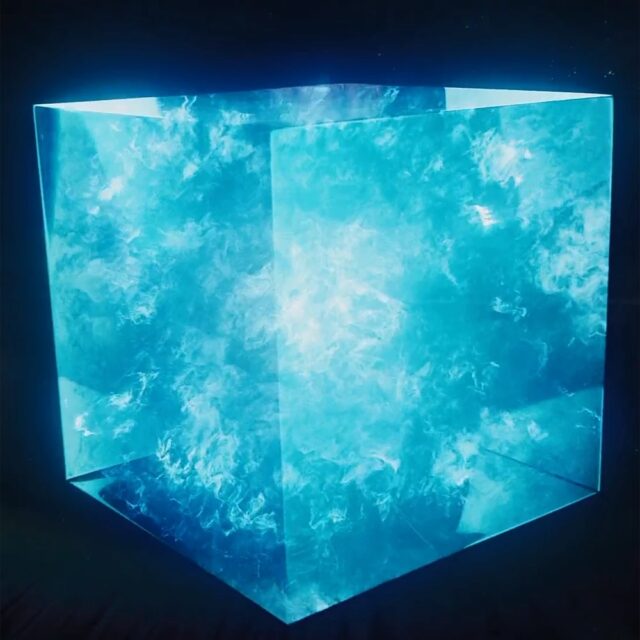
“Skyland” is a French-Canadian animated series set in a futuristic world where Earth has been shattered into floating islands, and a tyrannical regime called the Sphere rules over its scattered remains. In this world, “Kharzem Prison” is the most secure prison for holding dangerous criminals, particularly powerful Seijin, individuals with psychic abilities. The prison is hidden and constantly shifts position, making it nearly impossible to locate or escape from.
Kharzem Prison is a floating fortress composed entirely of cube-shaped prison cells, arranged in a massive lattice that continuously rearranges itself like a Rubik’s Cube. As a prison built from cubes, it strongly reinforces the symbolic connection between cubes and imprisonment—each individual cube functions as a self-contained confinement space, stripping prisoners of movement, freedom, and power. The constantly shifting nature of the prison also enhances the prison of fantasy symbolism, making it an ever-elusive, inescapable structure that traps its victims not only physically but conceptually.
At its center lies the core cube, the ultimate cell where the most important prisoner, Mila, was held. The fact that Oslo, the Sphere’s ruler, uses Kharzem not just for imprisonment but as a means to extract and control Seijin energy adds another layer to the symbolism. Just as cubes often imprison not only the body but also suppress power, knowledge, and individuality, Kharzem’s anti-Seijin field and energy-extraction chambers turn the prison into a tool of absolute control, reinforcing the idea that cubes symbolize restriction beyond the physical—containing potential, suppressing abilities, and enforcing submission.
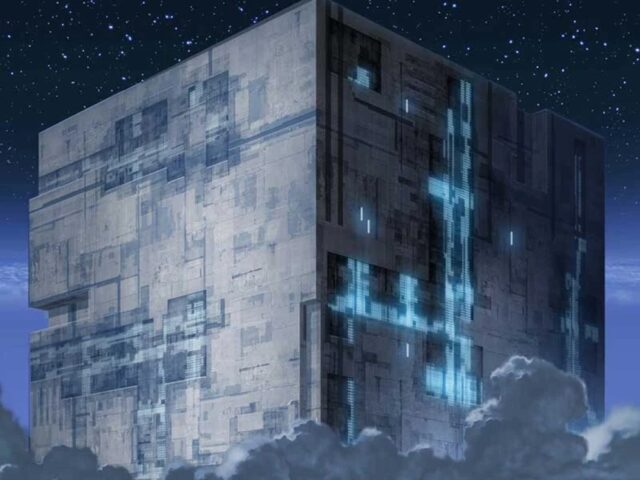
Intel’s commercial at the 2016 Grammys featured Lady Gaga inside a rotating glass cube, where the transparent walls symbolized the invisible barriers of a prison of fantasy. In the ad, Lady Gaga, a propaganda artist, served as a mouthpiece for a controlled narrative. The commercial was not just a display of Intel’s technology—it was an advertisement for how Intel, along with the producers of propaganda entertainment, such as those behind the content nominated at the Grammys, collaborate to refine and strengthen propaganda. By using cutting-edge technology, they make their messaging more immersive and persuasive. Rather than showcasing innovation for its own sake, the ad symbolically highlighted how these forces work together to shape perception and manipulate the masses under the guise of artistic and technological progress.
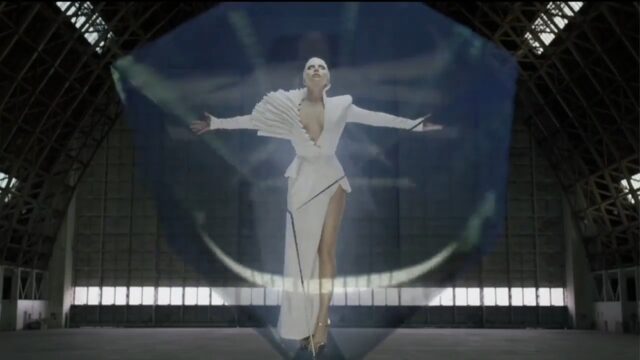
In the series “Prison Break” season 3, Michael Scofield is forced to break someone out of prison for The Company, a powerful organization of conspirators. In Episode 3, Call Waiting, Michael’s brother, Lincoln, receives a chilling phone call: “I left you something in the garage. It’s by the trash…” When he investigates, he finds a severed head resembling Michael’s girlfriend, Sara. Shocked and horrified, Lincoln, unable to closely examine it, assumes it is truly hers.
However, the head does not actually belong to Sara, making the box a symbol of imprisonment—not just of physical captivity but of mental and emotional entrapment. By making Lincoln believe a lie, the Company controls his actions, pushing him into absolute desperation. Driven by grief and fear, he becomes willing to do anything to complete the prison break, terrified that if he fails, the Company will do the same to his captive son.
Click to watch the video clips.
In the movie “Se7en” (1995), two detectives, Somerset and Mills, pursue a serial killer, John Doe, who commits murders based on the seven deadly sins. In the final scene, a box is delivered to them in the desert. As Somerset opens it and recoils in horror, Mills demands, “What’s in the box!?”—only to learn that it contains the severed head of his wife, Tracy.
The box represents more than just mystery; it is a symbol of imprisonment and a prison of fantasy. Until its contents are confirmed, Mills clings to the desperate hope that the situation isn’t as dire as it seems. Once opened, that illusion is shattered, leaving him emotionally and psychologically trapped in Doe’s carefully laid plan. His fantasy of justice and control is replaced by the grim reality that he has been manipulated into embodying the sin of wrath.
Yet even after the truth is revealed, the box does not free Mills—it imprisons him in a new delusion. Consumed by grief and rage, he loses all rational thought, believing that killing Doe will somehow bring justice or relief. In reality, his vengeance only completes the killer’s design. The box, therefore, does not just destroy one fantasy—it creates another, ensuring Mills remains trapped in Doe’s psychological grip.
Click to watch the video clip.
“Schrödinger’s Cat” is a thought experiment proposed by physicist Erwin Schrödinger in 1935 as a critique of the Copenhagen interpretation of quantum mechanics. The experiment describes a cat placed inside a sealed box containing a mechanism that can kill or spare the cat based on a random quantum event.
Inside the box, there is:
- A radioactive atom – It has a 50% chance of decaying within a certain time.
- A Geiger counter – If the atom decays, the counter detects radiation.
- A poison vial – If radiation is detected, the counter triggers a mechanism that breaks the vial, releasing poison that kills the cat.
- The cat – Completely unaware of what happens inside the box.
According to the Copenhagen interpretation, before measurement, the radioactive atom exists in a superposition—both decayed and not decayed. If this logic were applied to the cat, it would also be considered both alive and dead until someone opens the box. However, Schrödinger did not propose this as a real phenomenon—he mocked the idea, arguing that applying quantum mechanics to macroscopic objects led to absurd conclusions. In reality, the cat is always either alive or dead, even if we don’t know which until we check.
The misunderstanding comes from how quantum measurement works, particularly in the double-slit experiment. Many people mistakenly believe that photons “know” when they are being observed and change their behavior accordingly. When it’s actually not the act of conscious observation but the physical process of measurement that disturbs the photon’s wave function and forces it into a definite state.
Over time, many have taken Schrödinger’s Cat as a serious paradox rather than the critique it was meant to be. Some superstitious people have misinterpreted it to mean that observation magically determines reality. They use this misunderstanding to claim that things only happen if they are observed, or that existence itself depends on being perceived by someone or something. This belief has fueled quantum mysticism and pseudoscientific claims about consciousness affecting the universe.
The box in Schrödinger’s experiment becomes a symbol of a “prison of fantasy” because those who misunderstand it become trapped in a false belief—convinced that the cat truly exists in two states at once or that reality does not exist unless it is observed. Actually, the only uncertainty is our lack of knowledge, not reality itself.
The cube in music video “Calvin Harris – This Is What You Came For (ft. Rihanna)” symbolizes imprisonment within an illusion—a prison of fantasy. Rihanna is inside a glowing cube that displays images of the outside world, creating the illusion that she is free when she’s actually trapped by the illusion of beauty. This reflects the elite’s love for occult symbolism in music videos, where they glorify the cube as something mesmerizing while using it to represent control.
A striking auditory detail is how Rihanna sometimes pronounces “you” with a faint k sound before it, making it sound like she is about to say “cube,” but the end of the word is cut off. This is most likely not just a random quirk—it could be an intentional auditory illusion, subtly implanting the idea of the cube into the listener’s mind without them consciously detecting the illusion. For those who know how to look for symbolism, this could also serve as an Easter egg, a hidden clue reinforcing the deeper meaning of the video.
The video emphasizes beauty, using stunning visuals to create a dreamlike atmosphere. “Everybody’s watching her”—not just because she is famous, but because they are captivated by her beauty, failing to see the dark side of what’s going on. The audience is deluded, admiring her while ignoring that she is looking at the cube, a symbol of her imprisonment. This serves as a parable for Rihanna’s real-life role as the so-called “queen of the Illuminati“—an imprisoned puppet whose life is far from as glamorous as it seems.
The video both glorifies the cube and exposes its nature: a beautiful illusion masking a deeper reality of control.
The Swedish series “The Box” (2021) is a psychological thriller that explores the theme of a prison of fantasy. While the title might suggest physical confinement, The Box instead represents the inescapable mental and emotional entrapment of its protagonist, Kansas City detective Sharon Pici. As she becomes increasingly consumed by disturbing visions and inexplicable events, she finds herself trapped within a psychological maze where the boundaries between reality and illusion blur.
The titular “box” is not just the interrogation room where she conducts investigations—it symbolizes the constraints of her own mind, a place where she is held captive by forces beyond her understanding. In this sense, The Box becomes a metaphor for a prison of fantasy, where perception itself is the warden, and escape seems impossible. The series delves into the fear of losing control over one‘s own thoughts, illustrating how a person’s mind can become the most confining space of all.
The poster for “The Box” features a spider’s web, which adds to the psychological thriller aspect of the series, reinforcing themes of entrapment, paranoia, and an unseen force manipulating events. The dominant green color further symbolizes imprisonment, enhancing the sense of psychological confinement. It also shows Detective Sharon Pici’s head covering half of both Jedidiah Brag’s and Detective Thomas Lovell’s faces, leaving only one eye visible for each—a symbolic element related to fantasy.
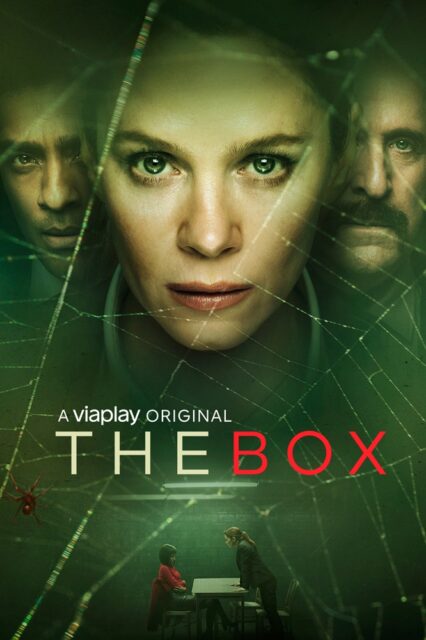
The movie “The Box” (2009) is often interpreted as a moral fable, a cosmic horror story, or a meditation on free will. However, at its core, the film is about the prison of fantasy—how human beings are trapped by their desires, illusions, and the narratives they construct to make sense of their existence.
The central premise of the film revolves around a simple yet insidious choice: a couple is presented with a mysterious box containing a button. If they press it, they will receive one million dollars, but someone they do not know will die. This scenario plays into the fantasy of instant wealth, of solving one’s problems with a single act, without facing direct consequences. However, as the story unfolds, it becomes clear that the box is not merely an external test—it reflects the deeper psychological and existential entrapment of the characters.
Fantasy, in this context, is not just about wish fulfillment. It is about the illusion of control and the idea that one can make choices without fully understanding their implications. The protagonist, Norma Lewis, is drawn into a web of bizarre and surreal events, each revealing that her perceived agency is an illusion. Her husband, Arthur, seeks rational explanations for the inexplicable forces at play, but every attempt to understand or escape the situation only leads them further into its grasp.
This entrapment is what makes The Box a film about the prison of fantasy. The characters are lured by a simplistic understanding of cause and effect, failing to see that their reality is governed by forces beyond their comprehension. Even when they attempt to resist, their choices are predetermined by the system in which they are ensnared. The film echoes themes of fate and determinism, showing that their supposed free will is just another illusion—a fantasy they cannot escape.
Ultimately, The Box presents fantasy not as an escape from suffering but as a mechanism that ensnares people in cycles of illusion and consequence. In seeking to grasp their desires, Norma and Arthur only tighten the chains that bind them, demonstrating how the human mind, when driven by self-interest and rationalization, becomes its own inescapable prison.
The poster for the movie “The Box” prominently features Norma Lewis’ face, with the silhouette of Arlington Steward—the man who delivers the box—positioned beneath her, holding it. A thick, semi-transparent red line extends upward from Arlington, cutting across Norma’s right eye. This one–eye symbolism reinforces the film’s exploration of fantasy, mirroring the deceptive allure of the box itself.
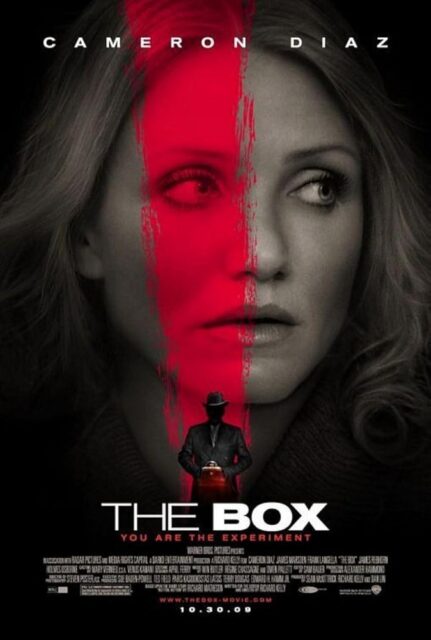
The movie “The Box” (2024) follows CEO Lazer Griffin as he becomes ensnared in a living nightmare, where his only escape from torment is to confront and accept his numerous crimes and the ensuing punishment.
This narrative can be interpreted as a depiction of the “prison of fantasy,” where Griffin’s entrapment symbolizes the consequences of living within a self-constructed illusion. His journey reflects the psychological confinement resulting from his fantasies of power and control, ultimately leading to his downfall. The film explores how one‘s refusal to acknowledge reality and moral responsibility can create a personal hell, serving as a cautionary tale about the dangers of succumbing to such delusions.
By confronting his misdeeds and accepting punishment, Griffin seeks liberation from this self-imposed prison.
The movie poster features Griffin tied to an office chair with his mouth bound and blood running down his face. He is also wearing a tie, reinforcing the symbolism of imprisonment. His face is turned to his left, making only his right eye visible. The one–eye symbolism reinforces the fantasy theme connected to the box, which represents a prison of fantasy.
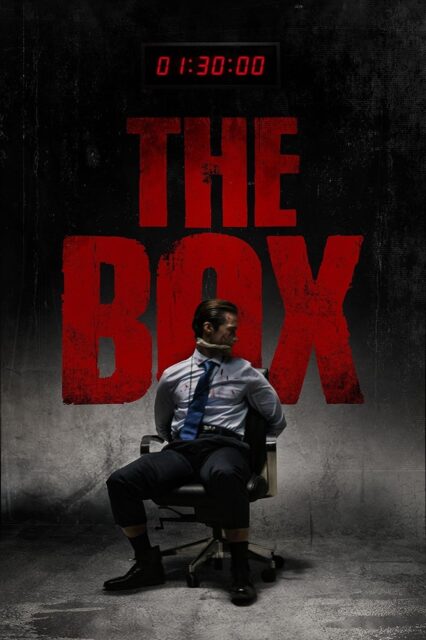
During Justin Bieber’s “Purpose” World Tour (2016), he performed “I’ll Show You” inside a glass cube, visually representing his imprisonment as a propaganda artist within the entertainment industry. The transparent walls created the illusion of freedom while emphasizing his confinement and lack of control. This staging choice starkly contrasted with the song’s music video, where Bieber is seen running down the mountains and freely through vast open landscapes. By performing the song inside a restrictive glass cube during the tour, the contrast highlighted the reality of his situation—while he may appear free, he remains trapped within the system that controls him.
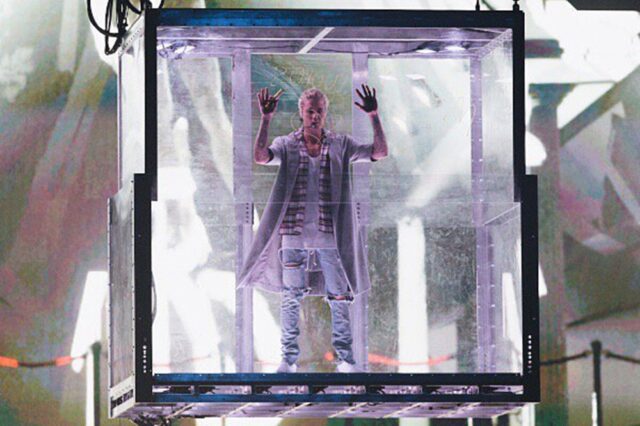
A prison cell shares the fundamental symbolism of a cube because both are closed structures with rigid boundaries. Just like a cube traps whatever is inside, a prison cell is designed to contain and restrict, limiting movement and visibility. The uniform walls of a cube mirror the inescapable nature of a prison, where every side is a barrier preventing freedom. Whether perfectly cubic or slightly rectangular, the essence remains the same: a structured, enclosed space meant to confine and control.
Additionally, prison cells are often painted completely green or follow a two-tone institutional paint scheme, where the lower half of the walls is green and the upper half is white. This color scheme reinforces the symbolism of imprisonment, with the stark contrast between the colors emphasizing the rigid and oppressive nature of the space. Even the doors of prison cells are frequently painted entirely green, further reinforcing the sense of confinement and institutional control.

Cages are most often produced and sold in cube or rectangular shapes due to the simplicity of their construction, efficient use of materials, and ease of transport. These rigid, enclosed structures maximize containment while minimizing complexity, making them practical for mass production. This standardized design also reinforces the symbolic association between confinement and these geometric forms.
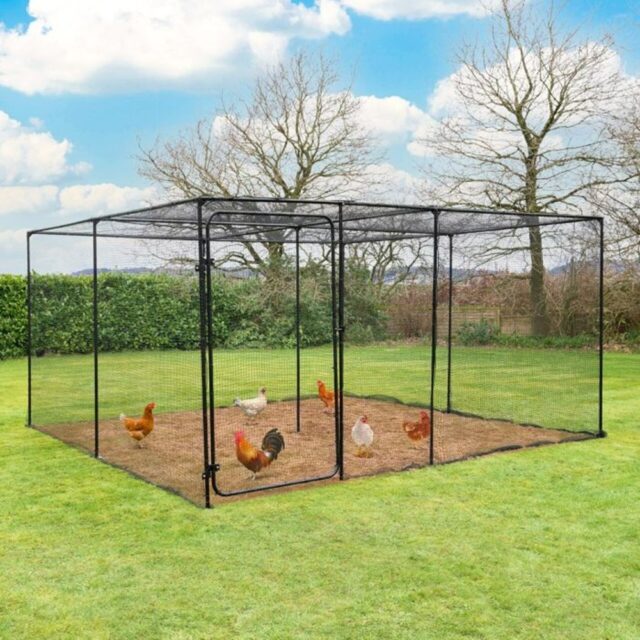
Vivariums, including aquariums and terrariums, are most often designed in cube or rectangular shapes because these forms are easier to manufacture, transport, and fit into indoor spaces. While practical, these rigid enclosures impose artificial boundaries on the creatures inside, replacing the vast, dynamic environments of nature with confined, controlled spaces. The straight edges and flat walls contrast sharply with the organic flow of water and the open landscapes that many animals would otherwise inhabit, subtly reinforcing the idea of restriction. This standardized use of cubes and rectangles further strengthens their symbolic connection to imprisonment, as these rigid shapes are commonly associated with confinement and control. Some humans take pleasure in containing and observing living beings within these structures, not out of necessity, but out of a sadistic desire to control and confine—reducing animals to mere decorations in a carefully curated prison.
Houses often symbolize imprisonment by representing confinement, restriction, or entrapment. This can be due to societal expectations, familial obligations, or personal limitations that keep individuals from freedom or change. Walls, locked doors, and small windows often reinforce this symbolism, emphasizing a lack of escape or control over one’s life.
In the movie “Vivarium” (2019), a young couple, Gemma and Tom, become trapped in a surreal, labyrinthine suburban neighborhood where every house is identical—green, cube-like, and sterile. The uniformity and artificial perfection of the houses symbolize imprisonment, stripping away individuality and freedom. Despite their attempts to escape, they find themselves endlessly looping back to the same house, reinforcing the inescapable nature of their confinement. Their forced existence within this structure, raising a mysterious child who rapidly matures and exhibits unnatural behavior, deepens the metaphor of domestic entrapment, transforming the house into a prison both physically and psychologically.
The green, cube-like house is such a strong symbol in the movie that it appears on the movie poster.
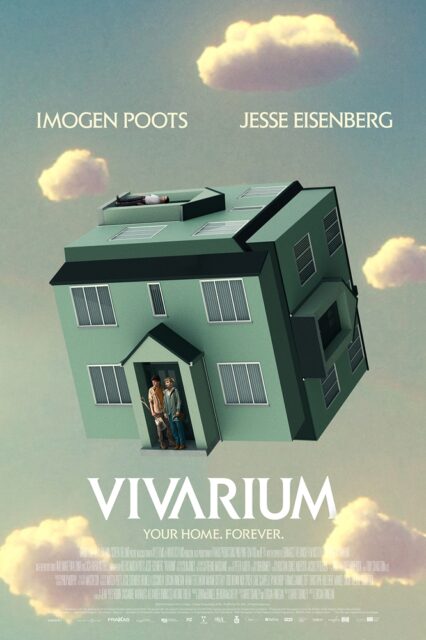
The design of office cubicles evokes the symbolism of imprisonment, enforcing confinement, restriction, and control. Their rigid, enclosed structure limits movement and visibility, while the uniform, repetitive layout fosters a sense of entrapment and monotony.
Though not physically locked in, workers experience psychological confinement, with low partitions offering only an illusion of openness. The standardized design prioritizes efficiency and oversight over individuality, reducing employees to interchangeable units within a system.
The cubicle becomes both a physical and psychological enclosure, reinforcing routine, surveillance, and isolation. This design subtly conditions individuals to accept restriction as a normative aspect of professional life.
In the series “Severance,” employees at Lumon Industries undergo a procedure that splits their consciousness into two distinct selves: their work self (“innie”) and their outside self (“outie”). The innies exist entirely within the office, with no memories or awareness of the outside world, effectively trapping them in a perpetual cycle of work. They are never allowed to leave—when they do, they instantly become their outie, with no recollection of their time outside. This means that, from the innies’ perspective, they are imprisoned at work forever.
A key visual element reinforcing this imprisonment is the green and white office space, particularly the green and white cubicles. The cubicle’s enclosed structure symbolizes physical and psychological confinement, restricting movement and individuality. The color green, often associated with control and regulation in institutional settings, takes on a sterile and oppressive quality when paired with stark white, emphasizing monotony and lack of freedom.
The endless rows of identical green and white cubicles reinforce a sense of uniformity, stripping employees of personal identity. Combined with the severance procedure, this environment transforms the workplace into a controlled, isolated world where workers are imprisoned not by walls but by their own fractured reality.
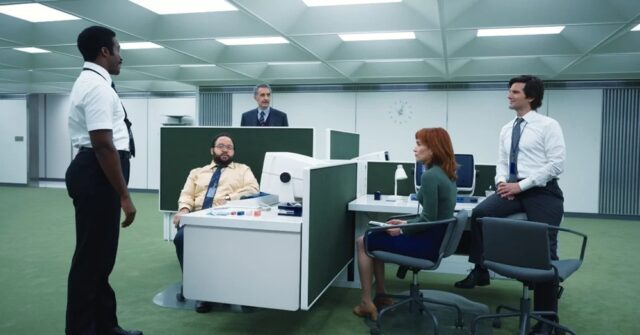
Cube-shaped buildings carry imprisonment symbolism because their rigid, enclosed structure mirrors the design of prisons and other confinement facilities. Their straight, unyielding walls and lack of curves or variation create a sense of restriction and inescapability. The uniformity and box-like shape emphasize containment, order, and control, reinforcing the idea of being trapped within a structured, confined space.
The Mukaab is an ambitious architectural project underway in Riyadh, Saudi Arabia, envisioned as a 400-meter-tall cube-shaped skyscraper. Serving as the centerpiece of the New Murabba development, it aims to become one of the largest built structures globally, encompassing approximately 2 million square meters of floor space.

The Arab-Ata Mausoleum is a historic mausoleum located in Tim, Jizzakh Region, Uzbekistan. It dates back to the 9th or 10th century, making it one of the earliest examples of pre-Mongol Islamic architecture in Central Asia. The mausoleum was built during the Samanid period and is notable for its brickwork and unique architectural style, which influenced later mausoleums in the region.
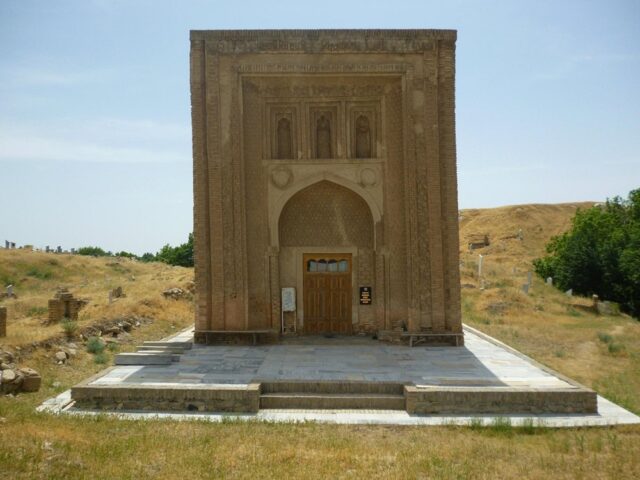
Palazzo della Cuba, also known simply as La Cuba, is a 12th-century palace in Palermo, Sicily, built during the rule of the Norman King William II of Sicily. It is part of the Arab-Norman Palermo and the Cathedral Churches of Cefalù and Monreale UNESCO World Heritage Site.
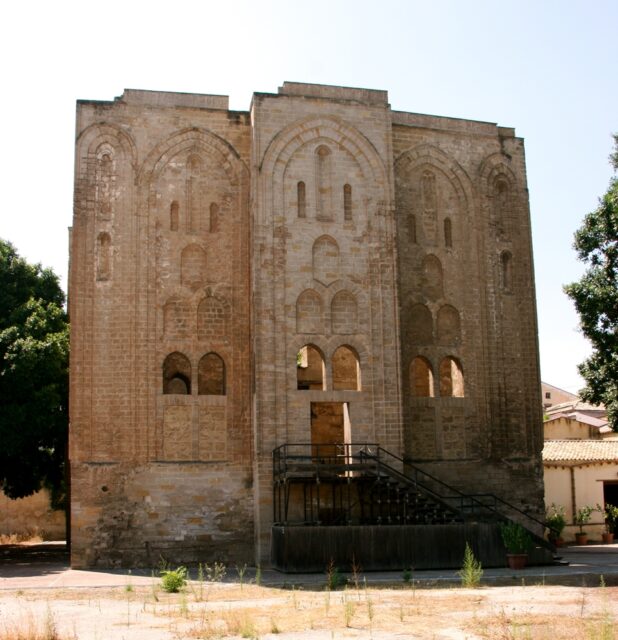
The Grande Arche de la Défense is a massive, modern arch-shaped building located in the business district of La Défense, west of Paris, France.
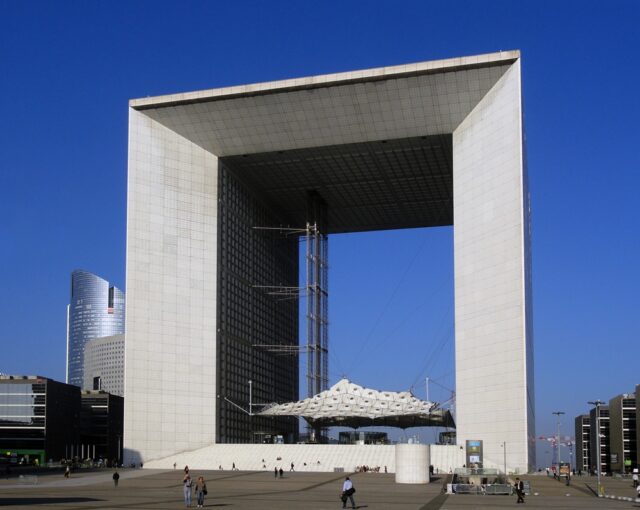
Cube Berlin is a modern, cube-shaped office building located in Berlin, Germany. It features a striking glass facade with a geometric design and is part of the Europacity development.
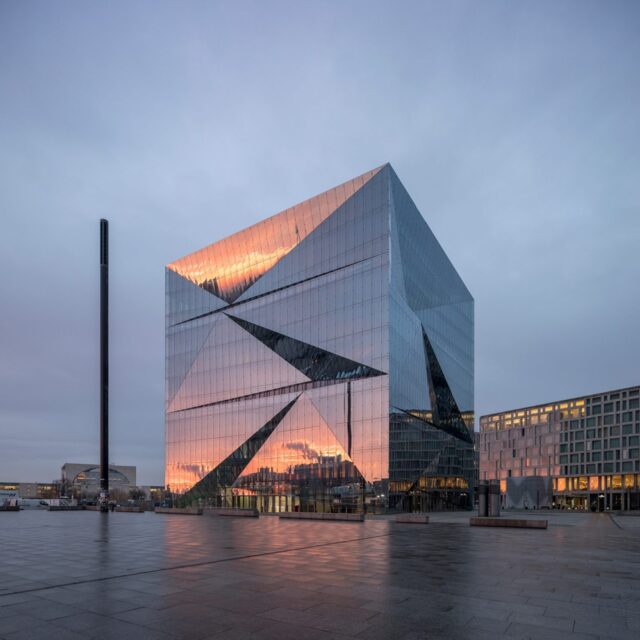
The Cube in Birmingham is a distinctive 25-story mixed-use development located in the city center of Birmingham, UK.
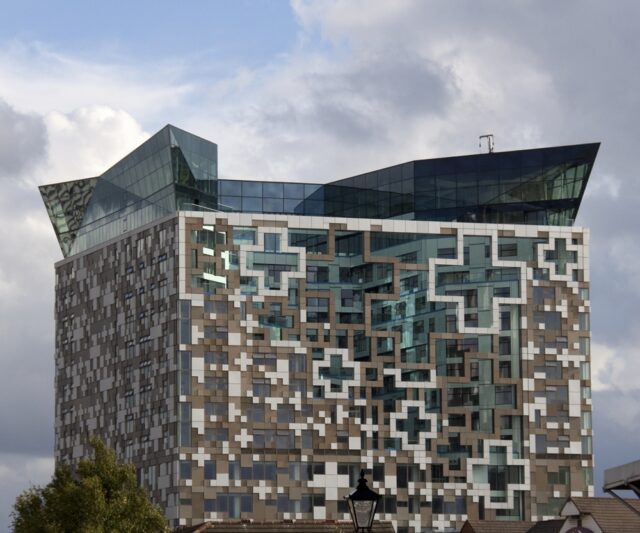
The Orange Cube in Lyon, France, is a modern architectural landmark located in the Confluence district. It is a striking orange-colored cube-shaped building. The hole in the corner of the cube-shaped building is reminiscent of the Black Stone’s placement in the Kaaba.
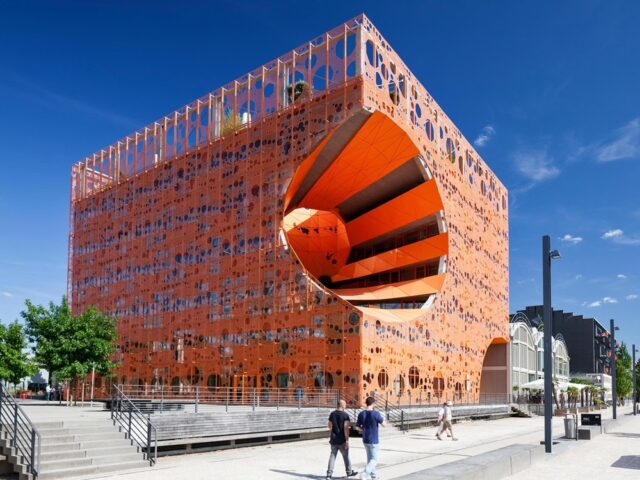
Blloku Cube is a cube-shaped office and commercial building located in the Blloku district of Tirana, Albania.
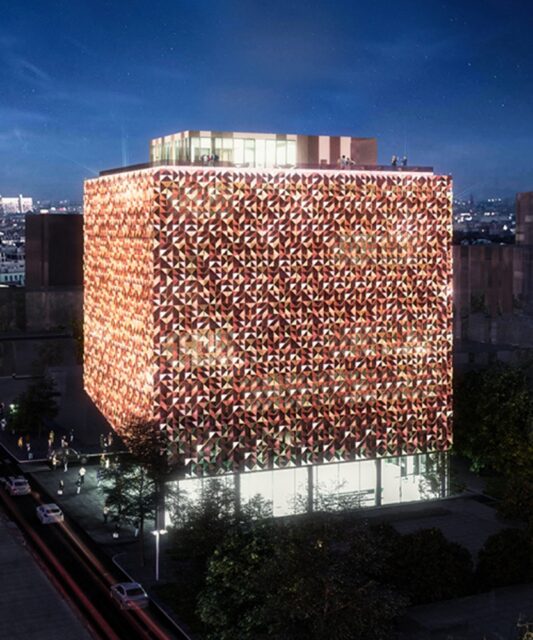
Paddington Cube, also known as the Paddington Square, is a modern glass cube office and retail development in Paddington, London, UK.
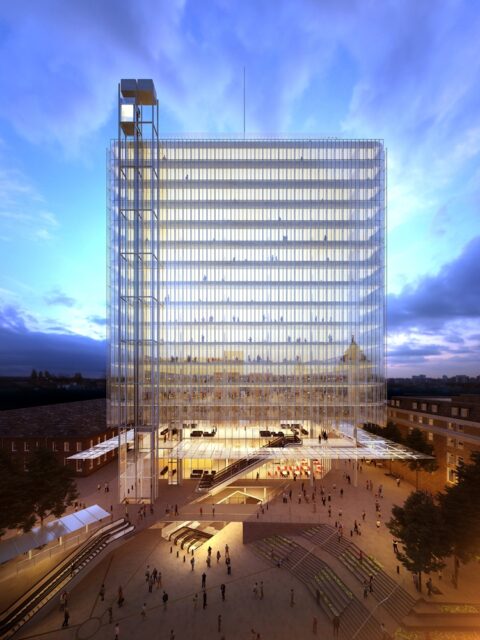
The glass cube entrance to the Apple Store on Fifth Avenue in New York City is a 32-foot-tall structure made entirely of glass, serving as the entry point to the underground store. First introduced in 2006 and later redesigned in 2011 with fewer, larger glass panels, the cube stands in contrast to the surrounding architecture. Visitors enter through the structure and descend via a glass staircase or elevator to reach the retail space below.
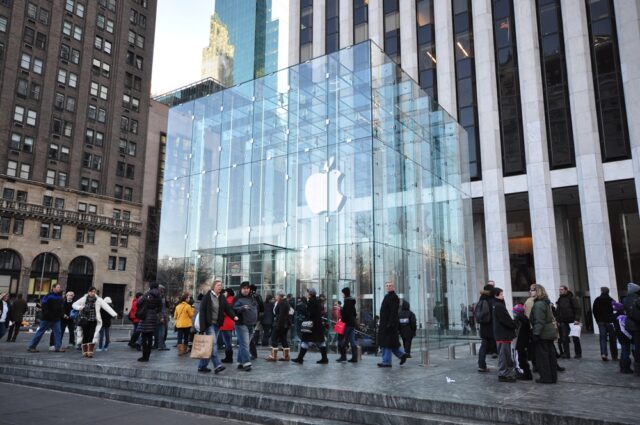
Cube monuments carry imprisonment symbolism because their rigid, enclosed shape represents confinement and restriction. Unlike more open or flowing structures, their box-like form evokes a sense of entrapment and control. These monuments can symbolize physical imprisonment, societal oppression, or ideological constraints. Found all over the world, cube-shaped monuments appear in various cultures and contexts, often serving as reminders of authority, power, and the limits imposed on individuals or groups.
La Tête Carrée (The Square Head) is a sculptural building in Nice, France. It serves as the headquarters for the Nice municipal library administration.
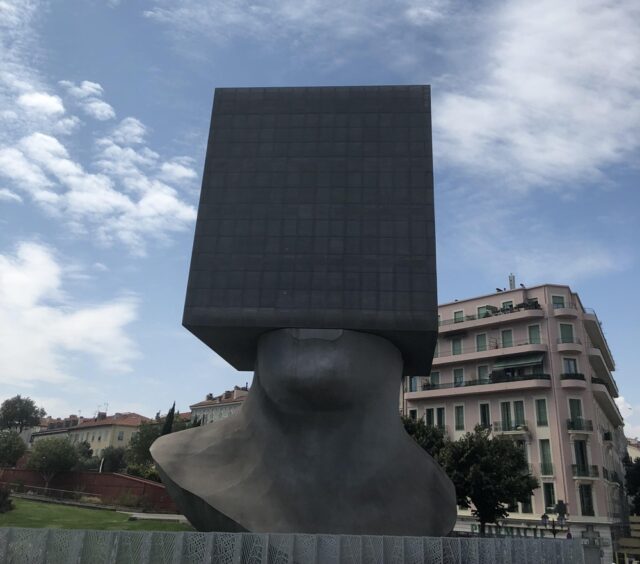
“Dirgahayu Bandar Raya” is a Malay phrase meaning “Long Live the City.” In Kuala Lumpur, Malaysia, this phrase was used to commemorate the city’s 50th anniversary as a city, celebrated from 1972 to 2022. To mark this milestone, a cube-shaped monument was erected in the city center, symbolizing the city’s growth and development over the past five decades.
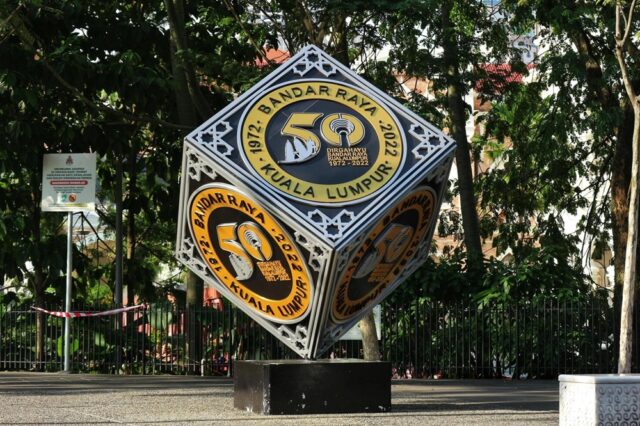
The Martin Luther King Jr. Memorial Cube is a prominent sculpture located on the Upper West Side of New York City, at the intersection of West 66th Street and Amsterdam Avenue, outside the Martin Luther King Jr. Educational Campus.
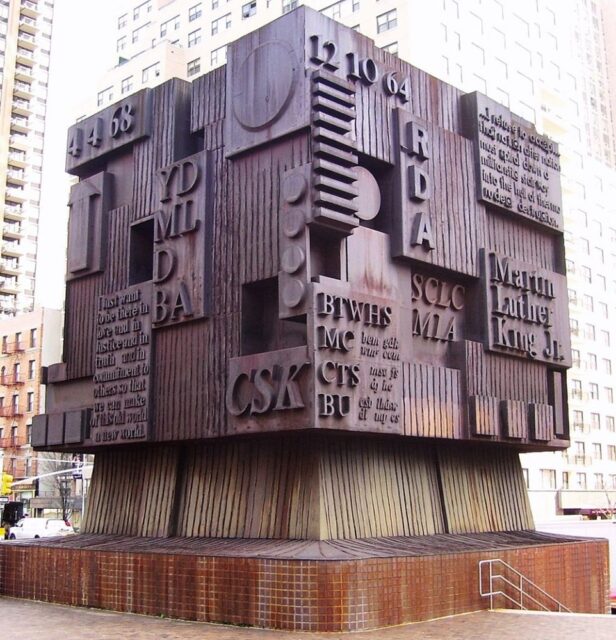
The Memorial to the Murdered Jews of Europe in Berlin is often referred to as a cube because of its design. The memorial consists of 2,711 concrete slabs (stelae) arranged in a grid pattern on a sloping field, creating a maze-like effect. It serves as a tribute to the Jewish victims of the Holocaust.
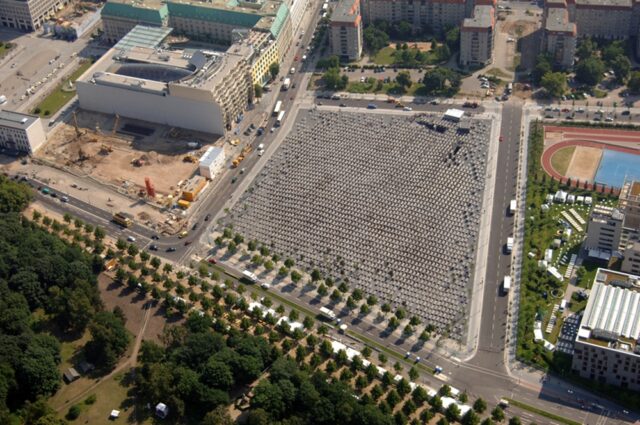
Black Cube
Definition: A black cube is a three-dimensional geometric shape with six equal square faces, uniformly colored black. A cube being black primarily serves as a symbol. Etymology: The word “cube”…
Box of Shame
Definition: “Box of Shame” is a metaphorical and visual representation of shame, embarrassment, or a desire to hide from judgment, usually by wearing a cardboard box over one‘s head or…
Kaaba
Definition: The Kaaba is a cube-shaped building located in the center of the Masjid al-Haram in Mecca, Saudi Arabia. It is the most sacred site in Islam and serves as…
Seal of Solomon
Definition: The “Seal of Solomon,” also known as the “Ring of Solomon,” is a symbolic emblem attributed to King Solomon, a wise and powerful monarch in Jewish, Christian, and Islamic…
Star of David
Definition: The “Star of David,” also known as the Magen David (Shield of David), is a hexagram or six-pointed star formed by two interlocking triangles. It is a prominent symbol…
Tefillin
Definition: Tefillin are small black leather boxes containing Hebrew scriptures, worn by observant Jewish men during weekday morning prayers. One box is bound to the forehead, and the other to…
Religion:
In Islam, the most significant cube is the Kaaba, located in Mecca. Muslims around the world face the Kaaba during prayer (Qibla), and it is the focal point of the Hajj pilgrimage.
In the Quran, in Surah 2, verse 127, it says: “And [mention] when Abraham and Ishmael were raising the foundations of the House [saying], ‘Our Lord, accept [this] from us. Indeed You are the Hearing, the Knowing.'” This verse refers to Prophet Ibrahim (Abraham) and his son Ismail (Ishmael) building the Kaaba, which is cube-shaped and considered the first house of worship dedicated to the One God.
In the Quran, in Surah 22, verse 26, it says: “And [mention, O Muhammad], when We designated for Abraham the site of the House, [saying], ‘Do not associate anything with Me and purify My House for those who perform Tawaf and those who stand [in prayer] and those who bow and prostrate.'” This verse highlights the Kaaba’s importance as a purified and sacred place of worship for the Muslims.
In the Bible, the cube appears in both the Temple of Solomon and the New Jerusalem, representing divine perfection and God’s dwelling place.
In the Bible, in 1 Kings, chapter 6, verse 20, it says: “The inner sanctuary was twenty cubits long, twenty cubits wide, and twenty cubits high, and he overlaid it with pure gold. He also overlaid the altar of cedar.” This describes the Holy of Holies, the most sacred part of the Temple in Jerusalem, as a perfect cube. It was where the Ark of the Covenant was kept and symbolized God’s presence among His people.
In the Bible, in Revelation, chapter 21, verse 16, it says: “The city lies foursquare, its length the same as its width. And he measured the city with his rod, 12,000 stadia. Its length and width and height are equal.” This passage describes New Jerusalem, the heavenly city, as a perfect cube, symbolizing divine perfection and eternal harmony.
The Celestial Kingdom, the highest of the three degrees of glory in Mormon theology, is sometimes associated with the cube through its connection to the New Jerusalem mentioned in Revelation. Some interpretations of temple architecture in Latter-day Saint theology also emphasize cube-like proportions to symbolize divine order and stability.
In some branches of Satanism, particularly in the esoteric and philosophical aspects, the Black Cube of Saturn is referenced as a symbol of material reality, restriction, and knowledge. The Satanic Bible by Anton LaVey does not explicitly mention the cube, but in modern occult traditions, the cube can symbolize the constraints of societal and religious structures that Satanism seeks to break.
In Buddhist cosmology and temple architecture, the cube is often used to represent stability and enlightenment. The stupa, a key Buddhist structure, often incorporates a cubic base, symbolizing the earth element and the foundation of spiritual progress. While canonical Buddhist texts like the Vinaya Pitaka, Sutta Pitaka, and Abhidhamma Pitaka do not explicitly discuss the cube, the shape is used in Buddhist symbolism.
In Hinduism, the cube appears in Vedic architecture and rituals. The Vastu Purusha Mandala is a sacred geometric grid used in Hindu temple and home design. The cube represents the earthly realm, stability, and cosmic order.
In the Brihat Samhita, in chapter 53, verse 1, it says: “The house should be square or rectangular, facing east or north, ensuring harmony with the cosmic forces.” This reflects the Hindu emphasis on geometry, where cube-like structures are associated with balance and the alignment of earthly and divine energies.
In Egyptian Mythology, the Benben Stone, an ancient Egyptian sacred stone, was often depicted as a pyramidal or cubic shape. It was believed to be the first solid form to emerge from the primordial waters of creation. Some scholars suggest that cube-shaped altars and temple foundations in ancient Egypt symbolized the stability and permanence of the divine order.
